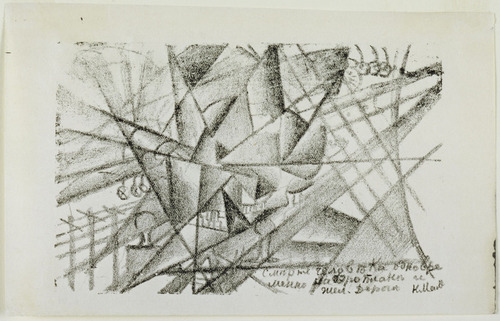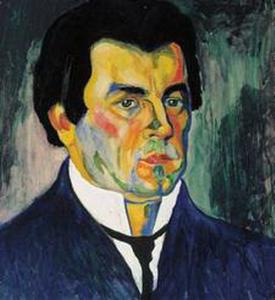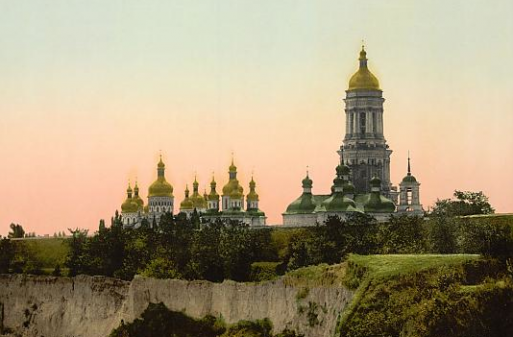
“Simultaneous Death in an Airplane and at the Railway” (1913) by Kazimir Malevich
(credit: theartofflight)
Kazimir Severinovich Malevich (1879-1935) was a geometric “Suprematist” abstract artist whose work helped spearhead the avant-garde movement in Russia and Eastern Europe in the early 20th century. His illustration “Death of the Man on the Airplane and on the Train at the Same Time” (1913) shows not only the promising style of the artist during his career’s beginning but a creative reflection on loss and death through the violence of a train and plane crash. These accidents are not a stranger to public discussion, even if they are statistically more rare than, say, a car crash. But when such tragedies do occur, I imagine that the media’s sensationalized fixation on them can make it harder for those who actually lost a loved one through the accident.
That’s where Malevich comes in. Although this Ukrainian artist’s illustration is directly inspired by the deaths and events of the First World War, his style is so interpretive that it transcends its time. Today, anyone who has lost a loved one – particularly to a transportation accident of some kind – can look at Malevich’s work and find something relatable in his abstract depiction of so many things: sheer violence, frustration, chaos, etc.
There is a good amount of movement in “Death of the Man on the Airplane and on the Train at the Same Time,” but one that is anchored to a very precise style. Every move of Malevich’s pencil is meant to both unite and separate the illustration’s subjects, creating a simultaneous sense of unrest and accord.
Malevich himself was no stranger to death. Growing up in what is today Ukraine, his parents had initially fled from the famous January Uprising against the tsar in 1863 to Kiev. He was one of 14 children in his family (only nine of which survived) and was accustomed to a life dictated by the curve balls thrown by revolution and tragedy. Today he is celebrated as a treasure of Ukraine, beloved for having woven political and philosophical messages into his work that speak to the importance of independence and creativity in life. When he died, a black square was hung above his bed and also donned by those in attendance of his funeral, as a simple but enigmatic symbol of his passing.
One never knows where they can find empathy or understanding. For some, Malevich’s little drawing could represent nothing more than the violence of a bygone war. Yet, the beauty and magic of abstract art is its ability to invite our interpretation and provide us with a kind of catharsis. When I look at “Death of the Man,” I do not see an image of loss exclusive to World War I. I see a timeless reflection on the chaos and magnitude of great, tragic loss – something many of us can relate to.
Check out more of SevenPonds’ Soulful Expressions here.

 Kazimir Malevich: Reflections on Tragic Loss
Kazimir Malevich: Reflections on Tragic Loss




 “In Case You Don’t Live Forever” by Ben Platt
“In Case You Don’t Live Forever” by Ben Platt
 Our Monthly Tip: Make an “In Case of Death” File to Ease Loved One’s Grief
Our Monthly Tip: Make an “In Case of Death” File to Ease Loved One’s Grief
 Passing of Beloved Comedian Births a New Comedy Festival
Passing of Beloved Comedian Births a New Comedy Festival














